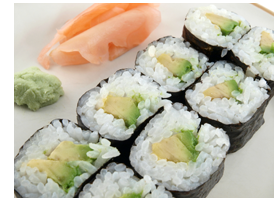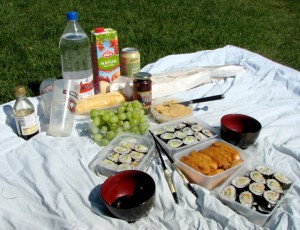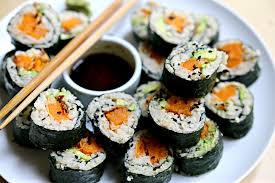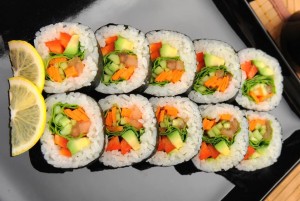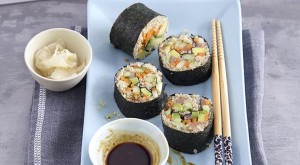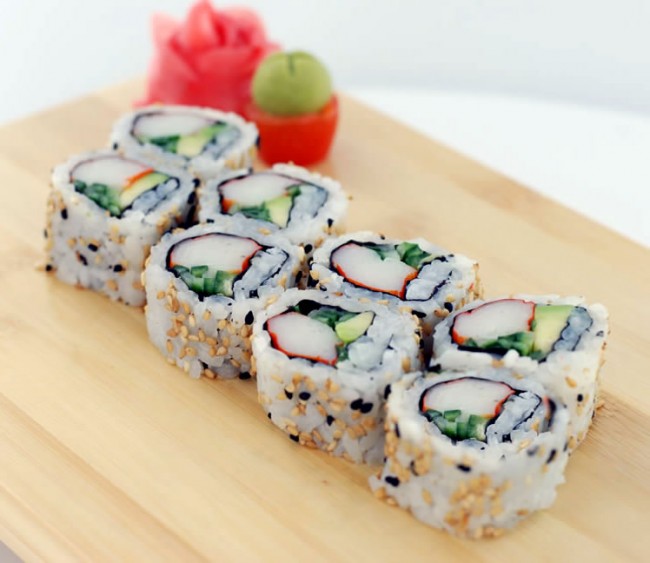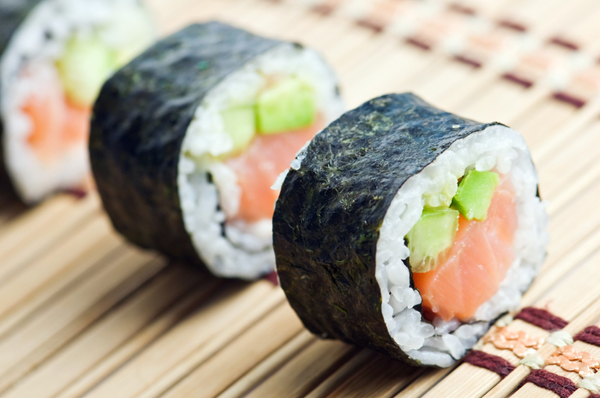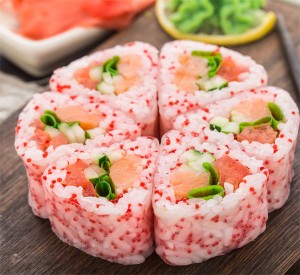
Image Credit: https://www.japancentre.com/en/recipes/1369-flower-shaped-sushi-roll
One of the great things about sushi is that it often has many colorful ingredients, and this can make it a beautiful and festive dish. Making sushi like this is a little more difficult than the previous recipes, but the added effort makes the presentation positively gorgeous!
To start, we’ll begin like we would with a standard roll of sushi. Tear a strip off your sheet of seaweed, then spread the rice over it, as usual. The ingredients will be wrapped in seaweed this time, to add a nice decorative effect (you’ll need two sheets of seaweed for this recipe). We’ll be making a design of a flower, so you’ll want a few differently colored ingredients. For this recipe, we’ll use crab meat (or imitation crab meat), carrot, and avocado; however, since this recipe is based on color and presentation, feel free to deviate from it and use any other colorful ingredients you like!
Spread the seasoned rice on the first sheet of seaweed, leaving, as always, a border on both the top and bottom edges. Wrap each of the ingredient strips with strips of the second sheet of seaweed, then line one strip of crab meat and one strip of carrot on top of the rice. Leave a little space between them, then lay the avocado strip on top of the other ingredients. Pull the seaweed layer to the edge of the bamboo mat with your thumb and forefinger, and begin to roll it together. Before you finish rolling, however, lay the remaining strip of crab meat and the strip of carrot on top of the avocado, and hold in place with your other three fingers. Carefully roll the rest of the sushi together, and gently press together. When you cut the sushi open, you should end up with a simple flower shape in each piece of sushi. Arrange the sushi on a dish and dazzle your friends!
This is the tenth and final chapter from an e-book by one of the Campus Clipper’s former publishing interns, who wrote about how to make sushi. Follow our blog for more chapters from this e-book. We have the most talented interns ever and we’re so proud of them! For over 20 years, the Campus Clipper has been offering awesome student discounts in NYC, from the East Side to Greenwich Village. Along with inspiration, the company offers students a special coupon booklet and the Official Student Guide, which encourage them to discover new places in the city and save money on food, clothing and services.
At the Campus Clipper, not only do we help our interns learn new skills, make money, and create wonderful e-books, we give them a platform to teach others. Check our website for more student savings and watch our YouTube video showing off some of New York City’s finest students during the Welcome Week of 2015.
Become a fan on Facebook and follow us on Twitter and Instagram


